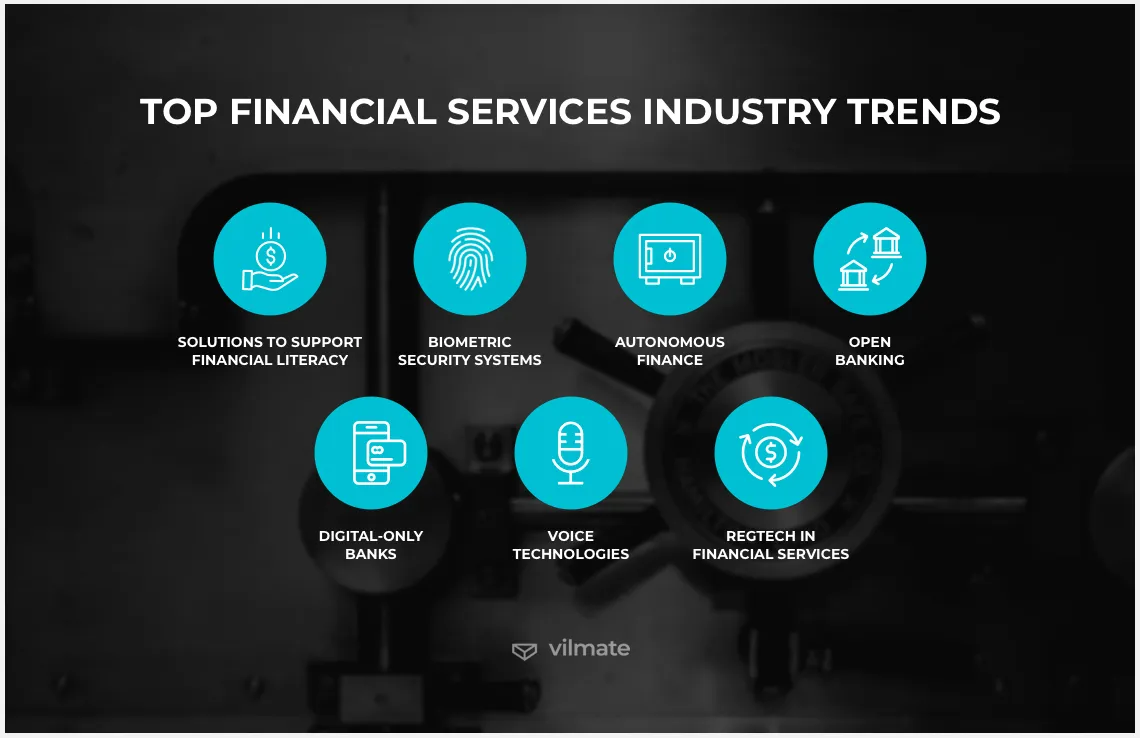These days, the mechanics of settling bills or making money transfers might only occupy a little of your mental space. The process is largely automated and seamlessly facilitated by a mobile app. However, not too far in the past, even the most fundamental banking tasks required a physical visit to a branch, involving paperwork completion and enduring queues. The financial landscape has undergone swift transformations, with fintech innovations revolutionizing banking, investment, insurance, and more. If you have yet to be attentive, the pace and extent of these changes might catch you off guard. Continue reading to familiarize yourself with the latest trends in fintech that are molding the future of finance and discern their implications for your financial portfolio. The realm of fintech is undergoing rapid transformations, but rest assured, we’ll bring you up to date so you’re well-informed about what lies ahead.
The Rise of Digital Payments and Contactless Transactions
The days of cash and checks are fading fast. Digital payments and contactless transactions are the new norm.
The Rise of Digital Wallets
Electronic wallets such as Apple Pay, Google Pay, and Samsung Pay offer the convenience of making payments effortlessly with a simple tap using your smartphone or smartwatch. No more digging for your credit card. Digital wallets use tokenization to secure your card details so that you can pay safely and conveniently.
Contactless Credit Cards
If you prefer using a physical card, contactless credit cards let you tap to pay for purchases under a certain amount, usually $50 to $100. Just look for the contactless symbol on your card. Contactless cards use the same secure tokenization technology as digital wallets.
Peer-to-Peer Payments
Services like PayPal, Venmo, and Zelle make it easy to send money to friends or split bills. All you need is the recipient’s email address or phone number. P2P payments are fast, convenient, and often free. They’ve become popular for paying rent, reimbursing friends, and more.
The rise of digital payments shows no signs of slowing down. As technology improves and security risks are addressed, consumers opt for the speed and convenience of contactless transactions and digital money transfers over cash and checks. The future of FinTech points to a world where your phone, watch, and cards are all you need to pay for anything, anytime, anywhere securely. In this evolving landscape, the accessibility of financial services is further enhanced, evident in the increasing prevalence of services like “Bitcoin ATM near me.”
The Proliferation of Mobile Banking and Investment Apps
In the contemporary era, most financial transactions and investment activities can be seamlessly conducted through your mobile device. The widespread surge in the popularity of mobile banking and investment applications has granted users continuous access to their accounts, allowing them to effortlessly transfer funds with a simple touch at any time of day.
- Check balances, pay bills, transfer funds, deposit checks – You have access to the fundamental banking operations. In managing your everyday financial requirements, numerous prominent financial institutions, such as Chase, Bank of America, and Wells Fargo, boast well-acclaimed mobile applications designed for smartphones.
- Robo-advisors like Betterment and Wealthfront allow you to open investment accounts, choose risk levels, and invest in low-cost ETF portfolios to meet your financial goals. They make investing simple and affordable for beginners.
- Self-directed stock trading apps like Robinhood, Webull, and Stash make purchasing and selling stocks and ETFs simple. There are no trading fees or minimum balance limitations, making registering an account and freely investing in companies you support simple.
- Crowdfunding platforms like Kickstarter, Indiegogo, and GoFundMe have mobile apps to run or back fundraising campaigns. You can bring creative products to life or donate to meaningful causes directly from your phone.
The proliferation of mobile finance and investment apps puts powerful tools in the palm of your hand. No matter your needs or experience level, you now have 24/7 access to banking, investing, and beyond. The future of fintech has arrived, and it fits nicely in your pocket.
The Emergence of Blockchain Technology and Cryptocurrencies
The rise of blockchain technology and cryptocurrencies is transforming financial services. Blockchain is the technology that enables cryptocurrencies like Bitcoin, and it’s poised to reshape banking, lending, insurance, and more.
Blockchain Basics
Blockchain, or distributed ledger technology, is a decentralized system for recording digital transactions. An international network of computers works together to authenticate and log transactions on the blockchain, as opposed to traditional centralized bodies like banks, which supervise record-keeping.
Digital assets known as cryptocurrencies are electronically traded and utilize blockchain for transaction recording. While Bitcoin enjoys widespread recognition, numerous alternative cryptocurrencies also exist. Cryptocurrencies operate decentralized, free from government or central bank control. Enthusiasts envision cryptocurrencies as the prospective evolution of currency, while regulatory concerns focus on the potential facilitation of illicit activities and susceptibility to extreme market fluctuations.
Implications for FinTech
Blockchain and cryptocurrencies could overhaul financial services. Blockchain may improve areas like payments, lending, and insurance with faster settlement times, reduced fraud, and lower costs. However, mainstream adoption faces challenges like complexity, lack of understanding, and regulation.
Cryptocurrencies pose risks but also opportunities. Some startups now offer crypto trading, lending, and banking. However, crypto’s extreme volatility makes some uses like payments difficult. Governments are grappling with how to regulate cryptocurrencies to curb fraud and illicit finance but still encourage innovation.
The future of blockchain and crypto in finance remains uncertain but promising. If harnessed responsibly, these technologies could make financial services more efficient, inclusive, and global. But balancing regulation and innovation will be crucial to achieving that promise.
Conclusion
And just like that, FinTech has revolutionized how we bank, invest, and manage our money. Forget about those boring trips to the local branch – now the future of finance fits in the palm of your hand. The speed of transformation continues to surge, prompting vigilant observation of cutting-edge advancements. In the blink of an eye, artificial intelligence and blockchain might revolutionize the landscape of global finance in unprecedented ways. Without a doubt, FinTech is a permanent fixture. The financial sector might undergo irreversible alterations, yet emerging technologies streamline financial transactions, expediting processes and enhancing convenience. This is a shift universally embraced. The future is FinTech, so hop on board for the ride ahead! Who knows where it may lead?





order atorvastatin 20mg online cheap atorvastatin over the counter brand lipitor
cost ciprofloxacin 1000mg – cheap cephalexin 500mg clavulanate cost
order ciprofloxacin online cheap – cephalexin 500mg without prescription augmentin 1000mg uk
buy flagyl 400mg pills – purchase zithromax for sale purchase zithromax online
ciprofloxacin for sale – buy ciprofloxacin 500 mg generic erythromycin tablet
brand valacyclovir – cheap zovirax 400mg acyclovir 400mg oral
ivermectin 12mg for people – ciplox price purchase tetracycline generic
metronidazole 400mg pills – buy terramycin 250mg online cheap buy zithromax generic
order furosemide pills – buy minipress 1mg generic order captopril 25mg pills
glucophage 500mg pill – buy glycomet 500mg for sale lincocin 500 mg price
buy retrovir 300 mg – order metformin 1000mg without prescription order zyloprim 300mg generic
clozaril pills – buy generic famotidine famotidine us
brand seroquel – bupropion canada cheap eskalith tablets
anafranil 25mg over the counter – asendin 50 mg generic doxepin online order
generic atarax – buspar order online endep 25mg us
oral augmentin 1000mg – order ampicillin without prescription baycip online
buy amoxil sale – duricef cost buy cipro generic
clindamycin without prescription – terramycin 250 mg generic chloromycetin pill
buy azithromycin 500mg sale – buy tetracycline 250mg for sale ciplox 500mg ca
stromectola online – cefaclor usa order cefaclor 250mg for sale
ventolin inhalator tablet – order theo-24 Cr 400mg generic cheap theo-24 Cr
medrol for sale – order cetirizine 5mg pill astelin price
order desloratadine – order clarinex pill albuterol 4mg uk
order glyburide 5mg sale – glipizide 10mg ca purchase forxiga generic
buy metformin pill – order losartan 50mg buy precose 50mg generic
buy repaglinide 1mg online – generic jardiance order empagliflozin generic
lamisil price – buy diflucan 100mg online cheap buy griseofulvin no prescription
semaglutide 14mg cheap – glucovance pills buy cheap DDAVP
nizoral us – buy lotrisone without a prescription itraconazole pill
famciclovir 250mg without prescription – order zovirax 800mg online cheap valaciclovir over the counter
lanoxin pills – dipyridamole order online order lasix